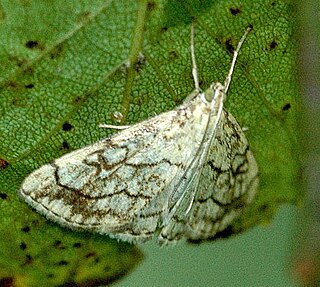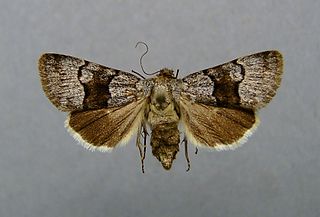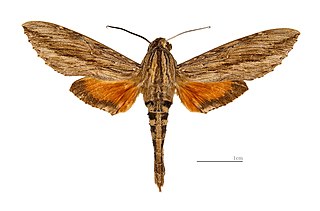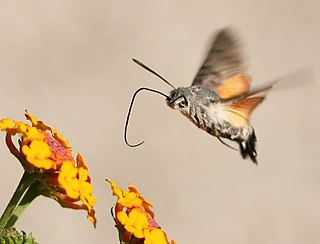
Eumorpha is a genus of moths in the family Sphingidae. The genus is mostly found in North and South America.

Xestia is a genus of noctuid moths. They are the type genus of the tribe Xestiini in subfamily Noctuinae, though some authors merge this tribe with the Noctuini. Species in this genus are commonly known as "clays", "darts" or "rustics", but such names are commonplace among Noctuidae. Xestia moths have a wide distribution, though they most prominently occur in the Holarctic.

Evergestinae is a fairly small subfamily of the lepidopteran family Crambidae, the crambid snout moths. The subfamily was described by H. Marion in 1952. It contains roughly 140 species on all continents and continental islands. Evergestine moths resemble Pyraustinae; however, the male genitalia have a long uncus and long, slender gnathos. The larvae feed mostly on Brassicaceae.

Hadenini is a tribe of cutworm or dart moths in the family Noctuidae. There are more than 140 genera and 1,000 described species in Hadenini, found worldwide.

The Apameini are a mid-sized tribe of moths in the Noctuinae subfamily.

The Xylenini are a mid-sized tribe of moths in the Hadeninae subfamily. There is some dispute about this tribe. Some resources have these genera listed under subfamily Cuculliinae instead, or upranked them to a distinct subfamily Xyleninae.

Loxostege is a genus of moths of the family Crambidae.

Agrochola is a genus of moths of the family Noctuidae. The genus was erected by Jacob Hübner in 1821.

Eurois is a genus of moths of the family Noctuidae first described by Jacob Hübner in 1821.

Euxoa is a genus of moths of the family Noctuidae raised to Genus by the German entomologist, Jacob Hübner. The Genus is mostly confined to dry and semi dry areas in the Northern Hemisphere. There 130 species in Eurasia, a few in Africa, and 175 in North America. There are no species in the Genus in South-East Asia or in Australia. In North America, most species are found in Western regions. Of the North American species, 4 are endemic to Mexico. There is one species recorded from Chile, but this may be a mislabeled specimen. In real terms, species numbers do not equal species abundance. Some areas with few species have large numbers of the ones that do live there.

Lithophane is a genus of moths of the family Noctuidae. They spend the winter as adults. Some species are capable of feeding on other caterpillars or on sawfly larvae, which is rather uncommon among Lepidoptera.

Oligia is a genus of moths of the family Noctuidae described by Jacob Hübner in 1821.

Sympistis is a genus of moths of the family Noctuidae. The genus was erected by Jacob Hübner in 1823.

Dilophonotini is a tribe of moths of the family Sphingidae described by Hermann Burmeister in 1878.

Macroglossini is a tribe of moths of the family Sphingidae described by Thaddeus William Harris in 1839.

Heliothinae is a small, cosmopolitan subfamily of moths in the family Noctuidae, with about 400 described species worldwide. It includes a number of economically significant agricultural pest species, such as Helicoverpa armigera and Helicoverpa zea.

Noctuina is a subtribe of cutworm or dart moths in the family Noctuidae. There are at least 170 described species in Noctuina.
Noctuini is a tribe of owlet moths in the family Noctuidae. There are at least 520 described species in Noctuini.

















